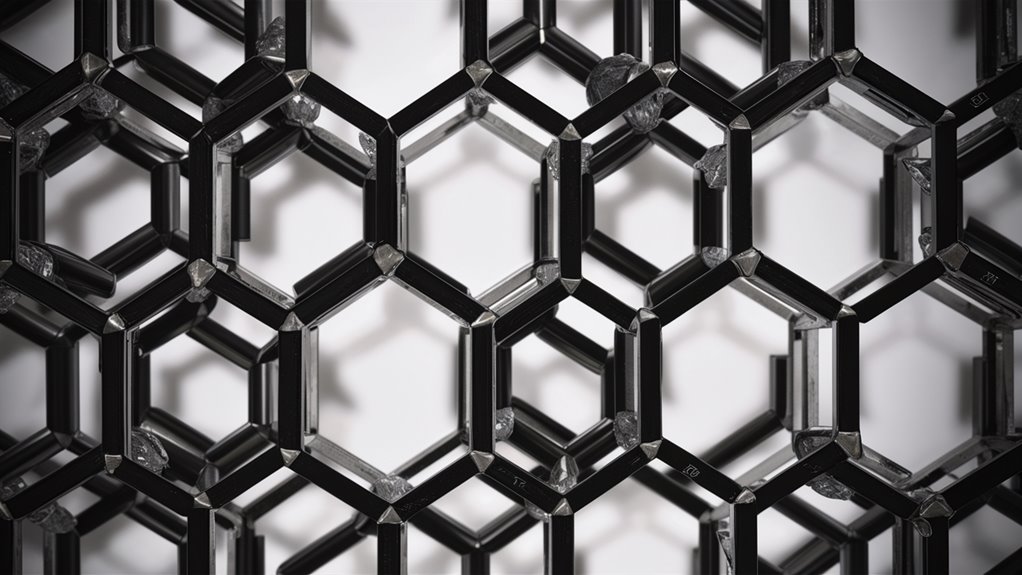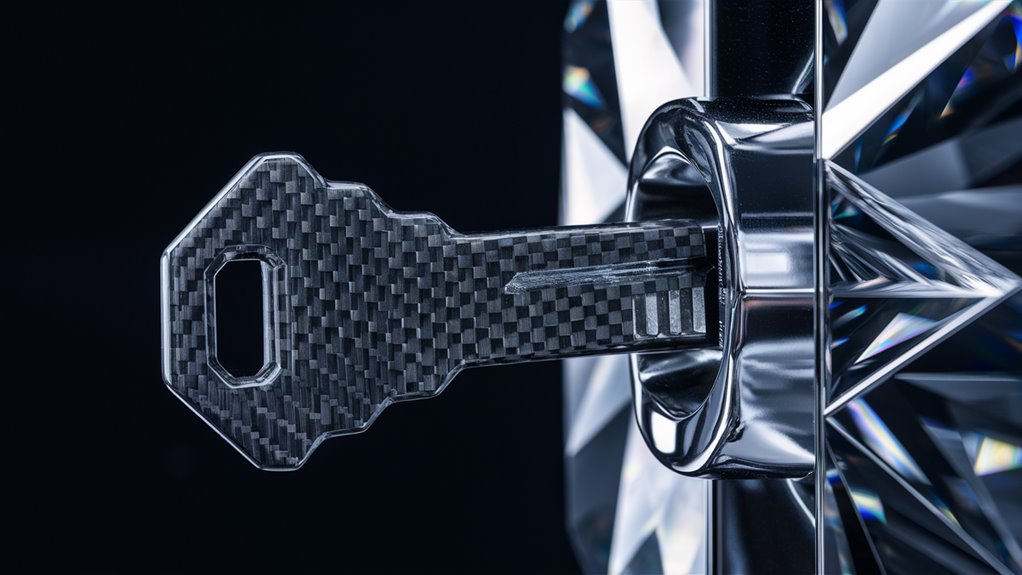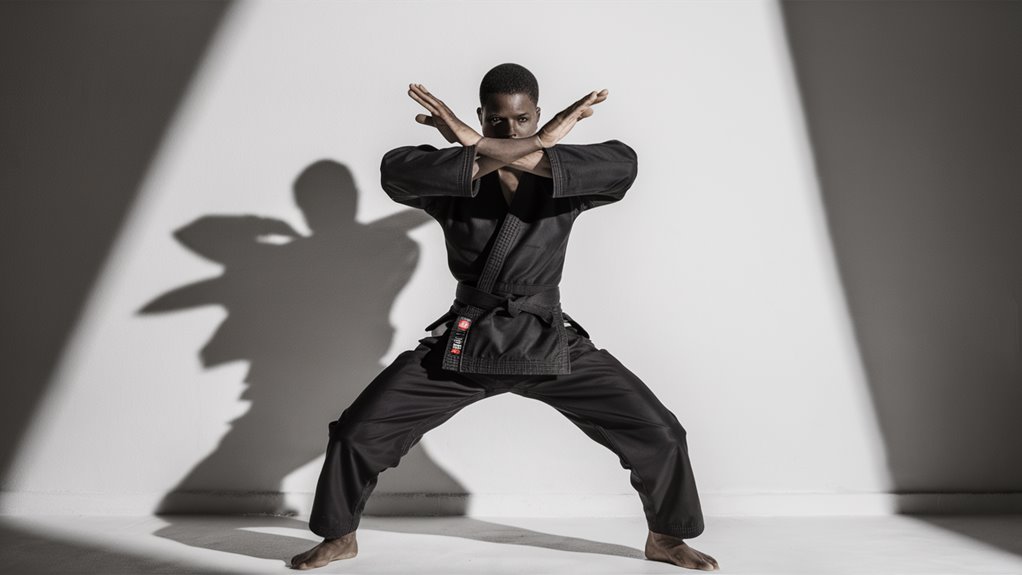
Carbon Key Approach: Locking in Your Edge With Diamond-Like Defense
Mastering the Carbon Key Approach: Diamond-Like Defense Strategy
*The Carbon Key Approach* revolutionizes defensive gameplay through its signature diamond-like formation, offering unparalleled protection against enemy advances. This comprehensive guide breaks down the essential elements of this cutting-edge defensive system.
Core Formation Mechanics
The foundation of the *Carbon Key defense* relies on precise unit positioning at *four critical angles*:
- 30° (Northeast quadrant)
- 120° (Southeast quadrant)
- 210° (Southwest quadrant)
- 300° (Northwest quadrant)
Three-Layer Defense Structure
Outer Layer
*Mobile defensive units* create an adaptive perimeter, constantly adjusting to incoming threats while maintaining the diamond formation’s integrity. These units require minimum *2+ armor rating* for optimal survivability.
Middle Layer
*Counter-offensive positions* serve dual purposes:
- Intercepting breakthrough attempts
- Launching strategic counterattacks
- Supporting outer layer movements
Inner Core
The *reinforced central position* acts as the formation’s backbone, providing:
- Command and control capabilities
- Resource distribution
- Emergency response coordination
Implementation Timeline
*Early-game deployment* is crucial for maximum effectiveness:
- Turn 1: Position outer layer units
- Turn 2: Establish middle layer defenses
- Turn 3: Complete core fortification
FAQ: Carbon Key Defense
Q: Why is the 30-120-210-300 angle configuration essential?
A: These precise angles create optimal coverage zones with minimal defensive gaps while maximizing unit support capabilities.
Q: What minimum armor rating is required?
A: All units must maintain at least 2+ armor rating to ensure formation stability and survival.
Q: Can the formation be modified for different team sizes?
A: Yes, the diamond structure scales effectively for both smaller and larger unit compositions while maintaining core principles.
Q: How does the three-layer system respond to concentrated attacks?
A: Each layer provides complementary support, allowing flexible responses to focused enemy pressure while maintaining overall defensive integrity.
Q: What are the key indicators of successful Carbon Key implementation?
A: Proper execution shows reduced defensive breaches, increased counter-attack opportunities, and sustained resource efficiency.
The Diamond Defense Framework

*The Diamond Defense Framework Guide*
*Core Defensive Formation Strategy*
The *Diamond Defense Framework* represents a breakthrough in competitive defensive strategy.
Structuring defenses in a four-point formation creates *optimal coverage* against both aggressive rushdown and zoning-focused opponents.
The framework’s foundation relies on precise unit positioning at 30, 120, 210, and 300-degree angles, establishing a *diamond-shaped formation* that maximizes defensive coverage while optimizing resource allocation.
*Tactical Implementation*
*Strategic timing* proves essential for effective framework deployment.
Establishing the *diamond formation* by turn three prevents opponents from developing offensive momentum.
Each defensive point requires a minimum of one unit featuring 2+ armor and sustain capabilities.
Implementing diverse damage types across positions (physical, energy, and hybrid) forces opponents to split resources when attempting defensive penetration.
*Adaptive Positioning*
The *framework’s adaptability* serves as its defining strength.
Any point within the diamond formation can shift toward pressure zones while maintaining defensive integrity.
This *tactical flexibility* enables sustained defense while creating *counter-attack opportunities*, particularly effective against single-vector offensive approaches.
#
*Frequently Asked Questions*
Q: What’s the optimal timing for Diamond Defense setup?
A: Establish the formation by turn three to prevent opponent momentum.
Q: How many defensive units are required per position?
A: Each point requires minimum one unit with 2+ armor and sustain capabilities.
Q: Can the formation adapt to aggressive opponents?
A: Yes, points can shift toward pressure while maintaining overall defensive structure.
Q: What damage types should be included?
A: Mix physical, energy, and hybrid damage across positions for optimal coverage.
Q: How does the framework counter zoning strategies?
A: The diamond shape provides comprehensive coverage against ranged attacks while enabling counter-pressure opportunities.
#
Building Pressure-Resistant Defensive Layers
# Building Pressure-Resistant Defensive Layers
*Constructing effective defensive systems* requires mastering the fundamental principles of *pressure-resistant layer development*. This comprehensive guide explores the essential elements of creating robust defensive structures that withstand sustained tactical pressure.
Understanding Core Defensive Principles
*Strategic layer construction* begins with identifying critical pressure points and potential vulnerabilities.
A thorough analysis of defensive positioning enables targeted reinforcement of high-risk areas through *multiple defensive components*.
This systematic approach ensures comprehensive protection against various forms of tactical pressure.
Three-Layer Defense Strategy
Outer Layer
The *exterior defensive layer* incorporates *mobile defensive elements* designed to absorb initial pressure while maintaining positional flexibility. These adaptable components redirect and diffuse incoming force without compromising the defensive core.
Middle Layer
*Mid-layer defenses* combine protective and counteroffensive capabilities, creating a dynamic barrier that responds to breakthrough attempts while preserving structural integrity. This hybrid layer enables both defensive stability and tactical counterplay opportunities.
Inner Layer
The 바카라 먹튀사이트 *core defensive layer* provides ultimate position security through *reinforced defensive structures*. This foundation ensures survival during sustained pressure and protects essential strategic points when outer defenses face compromise.
Defensive Integration Techniques
*Interconnected defensive elements* prevent the formation of isolated vulnerabilities and enable rapid support deployment.
Each layer maintains independent functionality while supporting adjacent defensive zones, creating a *cohesive defensive network* capable of withstanding multi-directional pressure.
FAQ Section
Q: How do you maintain flexibility in pressure-resistant layers?
A: Implement mobile defensive elements that can adapt to changing pressure points while maintaining structural integrity.
Q: What makes the middle layer particularly effective?
A: The combination of defensive stability and counterattack potential creates a dynamic response capability.
Q: How can weak points be identified and reinforced?
A: Regular position analysis and systematic evaluation of pressure points guide targeted reinforcement efforts.
Q: Why is layer independence important?
A: Independent layer functionality ensures defensive integrity even if one layer faces compromise.
Q: What role do connections play between defensive layers?
A: Inter-layer connections enable rapid reinforcement and prevent the formation of isolated vulnerabilities.
Mastering Defensive Movement Patterns

*Mastering Defensive Movement Patterns: A Complete Guide*
*Core Principles of Defensive Movement*
*Defensive movement patterns* form the foundation of effective pressure resistance in combat sports and martial arts.
Three essential dynamics govern successful defensive movement: *spatial control*, *timing disruption*, and *positional recovery*.
Maintaining optimal defensive spacing requires precise micro-adjustments that position defenders just beyond the opponent’s effective striking range while enabling rapid counter-offensive opportunities.
*Diamond Node Movement System*
The *diamond node system* represents interconnected movement sequences that create seamless transitions between defensive positions.
These strategic anchor points serve as pivotal locations from which defenders can execute multiple defensive options.
By connecting these nodes systematically, practitioners develop a fluid defensive matrix that responds dynamically to various attack patterns.
*Pattern Recognition and Response*
*Defensive efficiency* depends on identifying attack triggers and implementing appropriate defensive responses.
Close-range deflection patterns counter aggressive pressure, while long-range containment patterns neutralize methodical attacks.
This adaptive framework maintains defensive integrity while preserving energy and creating strategic counter-attacking windows.
*Frequently Asked Questions*
Q: What’re the key components of effective defensive movement?
A: Spatial control, timing disruption, and positional recovery form the core components of effective defensive movement patterns.
Q: How does the diamond node system work?
A: The system connects key defensive positions that enable quick transitions between stances while maintaining pressure resistance.
Q: What role does pattern recognition play in defense?
A: Pattern recognition allows defenders to anticipate attacks and select appropriate defensive responses based on the opponent’s approach.
Q: Why is spatial control important in defensive movement?
A: Spatial control helps maintain optimal distance from opponents, enabling both defensive safety and counter-offensive opportunities.
Q: How can practitioners improve their defensive movement?
A: Regular practice of movement patterns, focus on position transitions, and development of pattern recognition skills enhance defensive capabilities.
Creating Counter-Attack Opportunities
*Mastering Counter-Attack Opportunities in Fighting Games*
*Fundamentals of Counter-Attack Strategy*
*Counter-attack opportunities* emerge naturally from strong defensive positioning, requiring precise timing and strategic awareness.
The key lies in maintaining the critical balance between *defensive readiness* and *offensive preparation*, while identifying optimal moments when opponents leave themselves vulnerable.
*Key Counter-Attack Windows*
*Post-Block Punishes*
*Frame advantage* after blocking unsafe moves typically presents a 12-16 frame window for counter-attacks. Successful players pre-load counter options based on opponent patterns and tendencies. When facing aggressive players who favor heavy attacks, quick interrupts prove most effective.
*Whiff Punishments*
*Whiff punishment* requires positioning just outside the opponent’s optimal range, creating opportunities to capitalize on missed attacks. This defensive spacing allows for immediate offensive conversion while minimizing risk.
*Frame Trap Escapes*
Recognizing and escaping *frame traps* creates powerful counter-attack opportunities. Maintaining proper spacing enables quick transitions from defense to offense during opponent recovery frames.
## *Frequently Asked Questions*
Q: What’s the optimal timing for counter-attacks?
A: Counter-attacks are most effective during the 12-16 frame window after blocking unsafe moves or during opponent recovery animations.
Q: How can I improve my counter-attack success rate?
A: Practice maintaining proper spacing, recognizing opponent patterns, and pre-loading appropriate counter options.
Q: Which moves are best for counter-attacking?
A: Fast startup moves with good range work best, particularly those with 5-8 frame startup times.
Q: How do I practice counter-attack timing?
A: Use training mode to practice blocking and punishing specific unsafe moves while studying frame data.
Q: What’re common counter-attack mistakes to avoid?
A: Avoid over-committing to counter-attacks and maintain defensive positioning even when looking for offensive opportunities.
*Advanced Counter-Attack Positioning*
Position yourself strategically outside the opponent’s optimal range while maintaining *counter-ready stance*.
This creates opportunities to bait overcommitment while staying prepared for immediate offensive conversion.
Watch for common triggers like repeated jump-ins or predictable special moves to maximize counter-attack effectiveness.
Training Your Mental Fortress

Building Your Mental Fortress in Fighting Games
Developing Elite Defensive Psychology
*Mental discipline* stands as the cornerstone of high-level fighting game defense, requiring *systematic training* to forge unshakeable psychological resilience.
A well-structured *mental conditioning program* enables consistent defensive reads and unwavering focus under tournament pressure.
Core Training Methodology
*Mindful defense practice* begins in training mode with targeted drills focusing on specific defensive techniques.
Dedicate *focused 15-20 minute sessions* to defending against varied mix-up scenarios while monitoring your mental state.
When emotional tension surfaces, implement immediate *reset protocols* to maintain optimal learning conditions.
The Three Pillars of Mental Defense
*Defensive mastery* rests on three fundamental pillars:
- Patience: Maintaining composure during opponent pressure
- Adaptability: Quickly adjusting to changing offensive patterns
- Emotional Control: Managing internal states during high-stress situations
Advanced Defense Analysis
*Frame-perfect defense* requires systematic identification of *defensive triggers* – situations that compromise your mental state and lead to defensive errors.
Maintain a detailed *performance log* documenting:
- Specific situations causing defensive breakdowns
- 위대한 승리를 조각하다
- Successful adaptation strategies
FAQ: Mental Training in Fighting Games
Q: How long should I practice defense daily?
A: Dedicate 15-20 minutes of focused defensive training, ensuring quality over quantity.
Q: What’re common defensive mental blocks?
A: Panic blocking, excessive button pressing, and freezing under pressure are typical challenges.
Q: How do I maintain focus during long sets?
A: Develop breathing techniques and micro-reset routines between rounds.
Q: When should I analyze my defensive replays?
A: Review matches within 24 hours while the mental state is still fresh.
Q: How do I prevent defensive autopilot?
A: Regularly rotate through different defensive scenarios and maintain active mindfulness during practice.

